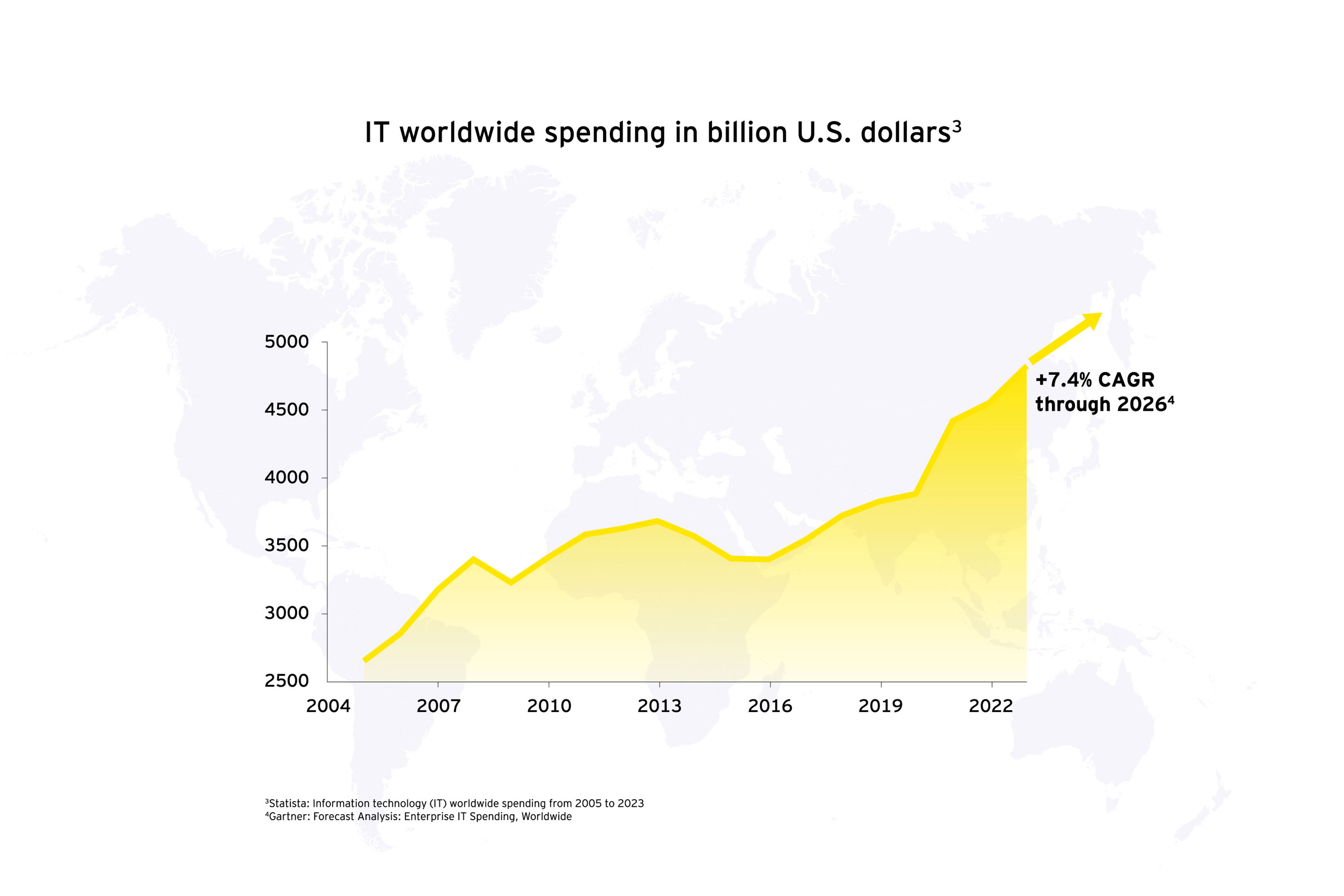IT Financial Management
IT Financial Management includes a set of processes and tools that supports an organization to effectively account for, manage and analyze IT costs and communicate the value of IT to the business
What EY can do for you
There is a growing need for IT Financial Management (ITFM) tools and capabilities in today’s technological environment.
As seen in figure 1, the digital transformation is fueling IT spending and increasing the complexity of IT environments. Unfortunately, this development has caused many organizations to lose control over their IT costs and made it difficult for IT management to demonstrate the value of IT.
As a result, the need for a solution enabling organizations to effectively account for, manage, and analyze IT costs and communicate their value to the business has greatly increased. EY has developed a proven approach to ITFM that allows organizations to regain control over their IT costs.

EY’s approach to IT Financial Management
There are four main deliverables, as displayed in figure 2, at the core of EY’s approach to ITFM. Together, these enable your organization to mature its ITFM discipline. As ITFM becomes a core part of running your technology function, it allows you to build and nurture the following six key business capabilities.

Figure 2: EY's approach to ITFM
EY’s delivery model for IT Financial Management
EY’s delivery model for ITFM is based on deep domain expertise and a rich client history. The model has four distinct phases, as displayed below in figure 3.

Figure 3: EY's delivery model based on four distinct phases
Our latest thinking
The team
Contact us
Interested in the changes we have made here,
contact us to find out more.




